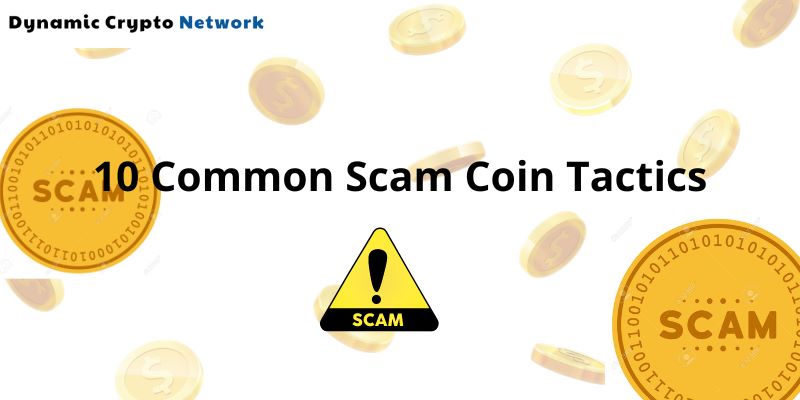Scam coins are deceptive cryptocurrencies designed to defraud investors with promises of high returns. Learn how to identify these fraudulent schemes, understand their common tactics, and protect your investments in the volatile world of digital currencies. Stay informed to avoid costly mistakes and safeguard your assets.
What is a Scam Coin and Why is it dangerous?
What is a Scam Coin?
A Scam Coin refers to cryptocurrencies created with the intent to defraud investors. These deceptive assets are often marketed with promises of significant returns in a short time. Behind these enticing claims lies a sophisticated network set up by professional fraudsters, whose sole aim is to seize investors’ assets.
Investing in Scam Coins can have severe repercussions. Beyond losing the invested funds, victims may also have their personal information, bank accounts, and even digital identities stolen. Often, victims of Scam Coins find themselves disoriented and distrustful of the broader cryptocurrency market.
Common Forms of Scam Coins
Scam Coins can manifest in various forms, from “ghost” projects lacking real products to manipulative tactics that drive up prices before dumping the assets, leaving investors stuck with worthless coins. Identifying Scam Coins is not easy; it requires investors to be vigilant and well-informed about market analysis and risks.
Here are some common Scam Coin schemes:
- Pump and Dump: Fraudsters artificially inflate the price of a Scam Coin through false information, attracting investors to buy in. Once the price is sufficiently high, they sell off their holdings, causing the price to plummet and leaving investors with significant losses.
- Rug Pull: In this scheme, the project is created solely to deceive investors. After raising a certain amount of funds, the scammers “pull the rug” and disappear with the investors’ money.
- Fake ICO/IDO: Scam Coins often conduct fake ICOs/IDOs to raise capital from the community. The raised funds are then misappropriated, and the project never materializes.
Understanding these tactics is essential for protecting yourself from the risks associated with Scam Coins. Stay informed, research thoroughly, and remain cautious to navigate the cryptocurrency market safely.
10 Common Scam Coin Tactics
Psychological Manipulation Tactics
Exit Scam
In an Exit Scam, fraudsters create a cryptocurrency, attract investors with enticing promises, and then abruptly sell off all their holdings. This action causes the coin’s value to plummet, leaving investors with worthless assets.
Ponzi/Pyramid Scam
Ponzi and Pyramid schemes masquerade as legitimate investment opportunities where returns are paid using new investors’ funds. The scheme collapses when it can no longer attract new participants, leaving the last investors at a loss.
Rug Pull
A Rug Pull involves creating a seemingly promising project, only to withdraw all liquidity once a substantial amount of funds has been invested. This sudden withdrawal causes the token’s value to drop to zero, trapping investors with worthless assets.
Pig Butchering/Romance Scam
Fraudsters establish romantic relationships with victims through social media. They then convince victims to invest in fraudulent cryptocurrency projects or steal their account information.
Social Engineering
Using sophisticated psychological manipulation techniques, scammers exploit human gullibility to trick victims into disclosing personal information, account details, or making unauthorized transactions.
Technical Attack Strategies
Phishing Attack
Phishing attacks involve sending fraudulent emails or messages that mimic reputable organizations. Victims are tricked into clicking malicious links, which can compromise their login credentials, bank accounts, or cryptocurrency wallets.
Dusting Attack/Revoke Scam
In a Dusting Attack, attackers send small amounts of cryptocurrency to multiple wallets to track transaction patterns and identify owners. This information can then be used to steal assets from these wallets.
Sybil Attack
A Sybil Attack involves creating numerous fake accounts to manipulate a blockchain system. This can affect token prices, voting outcomes, or other network activities by generating false data or influence.
DDoS Attack
Distributed Denial of Service (DDoS) attacks overwhelm a system with excessive traffic, rendering it inoperable. This can cause significant disruptions and potentially mask other fraudulent activities.
Malware Attack
Malware is malicious software installed on a victim’s device to steal login details, passwords, or private keys. It can completely compromise the victim’s device and cryptocurrency holdings.
How to Spot Scam Coins?
Identifying Scam Coins before investing is crucial to safeguarding your assets in the volatile world of cryptocurrencies. Scam Coins can often present themselves under the guise of legitimate projects, but with careful examination, you can uncover signs of deceit. Here’s a guide to recognizing the red flags associated with Scam Coins through project details, technical analysis, and community feedback.
Identifying signs from the project and development team
Lack of Transparency: Scam projects often fail to provide comprehensive information about their goals, development roadmap, team members, and technical documentation. If a project is vague or incomplete in these areas, it could be a scam.
- Unprofessional or Outdated Website: A website that is poorly designed, outdated, or lacking in essential details can be a warning sign. Legitimate projects typically invest in a professional online presence that is regularly updated with relevant information.
- Anonymous Development Team: If the project team members are anonymous or provide no verifiable information about their experience and skills, this should raise concerns. Transparent projects usually have publicly identifiable team members with a credible track record.
- Unrealistic Profit Promises: Be cautious of projects promising extraordinarily high returns with little or no risk. Such promises often indicate a lack of real substance and are designed to lure in unsuspecting investors.
Technical Analysis to Detect Scam Coins Through Price and Volume Charts
- Unusual Price Fluctuations: Watch for erratic price changes that occur without any clear reason or supporting events. Sudden spikes or drops in value can be indicative of price manipulation or a scam.
- Low Trading Volume: Low trading volume or sudden spikes in volume can suggest price manipulation. Healthy projects typically exhibit consistent trading activity and liquidity.
- Lack of Social Media Engagement: An absence of genuine interaction or the presence of fake comments and reviews can create a misleading sense of popularity or legitimacy. Scrutinize the activity on social media platforms related to the project.
Community and Expert Warnings
- Community Skepticism: Pay attention to feedback from cryptocurrency forums, independent experts, and market analysts. A high level of skepticism or negative reviews from the community can be a strong indicator of potential fraud.
- Warning Articles: Reputable cryptocurrency news websites and blogs may publish articles warning about specific projects or exposing fraudulent activities. Stay updated with credible sources to avoid falling victim to scams.
Protecting Yourself from Scam Coin Deception
In the ever-evolving cryptocurrency market, protecting yourself from Scam Coins is essential. By adopting proactive measures and staying vigilant, you can safeguard your investments and personal information from fraudulent schemes.
Always secure your personal information, cryptocurrency wallets, and trading accounts. Never share your login credentials or passwords with anyone, including support staff from exchanges.
Exercise caution with emails, messages, and links that appear suspicious, especially those promoting “easy profits” or “high returns.” Remember, “free cheese is only found in a mousetrap.”
Participate in courses and seminars on cybersecurity within the cryptocurrency realm. Gaining knowledge and skills on how to avoid risks will help you stay ahead of potential threats.
What to do if you become a Victim?
If you discover that you have fallen victim to a Scam Coin, calmly gather all relevant evidence. Document your transaction history, messages, and any related emails.
Notify the appropriate authorities and the exchange where you conducted the transactions involving the Scam Coin. Provide them with comprehensive evidence and details to aid in their investigation.
Reach out to community forums and legal experts for advice and legal assistance. Their support can be invaluable in navigating the process of addressing and resolving the issue.
Follow Dynamic Crypto Network for more information!





